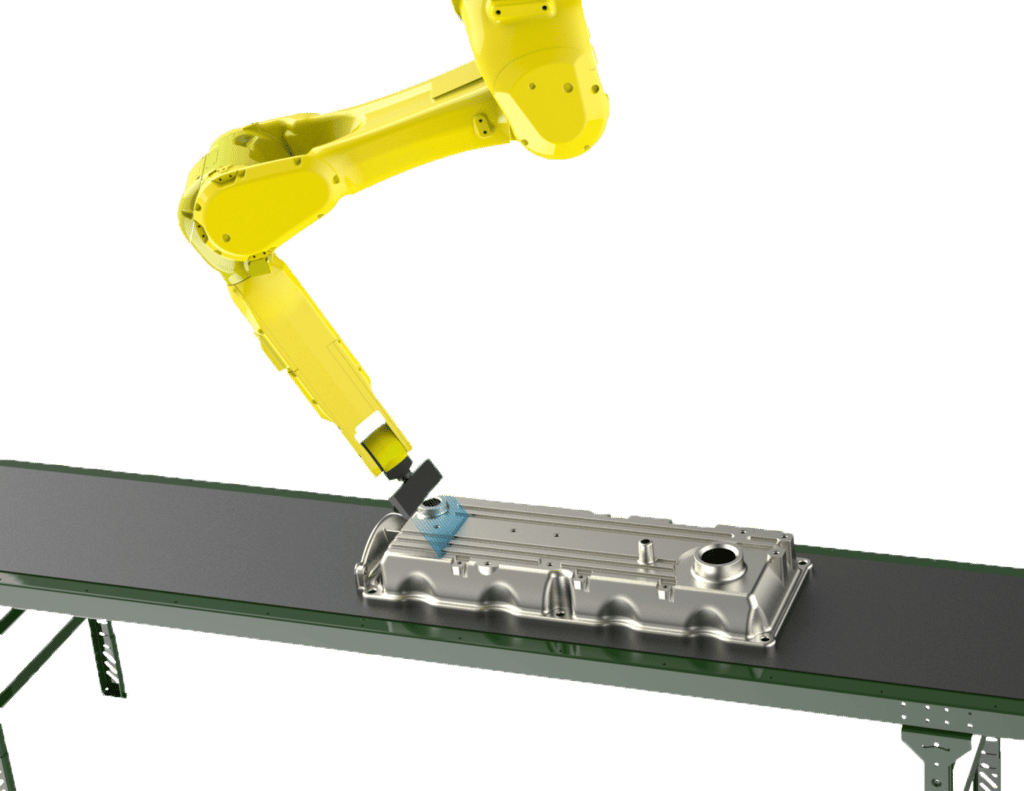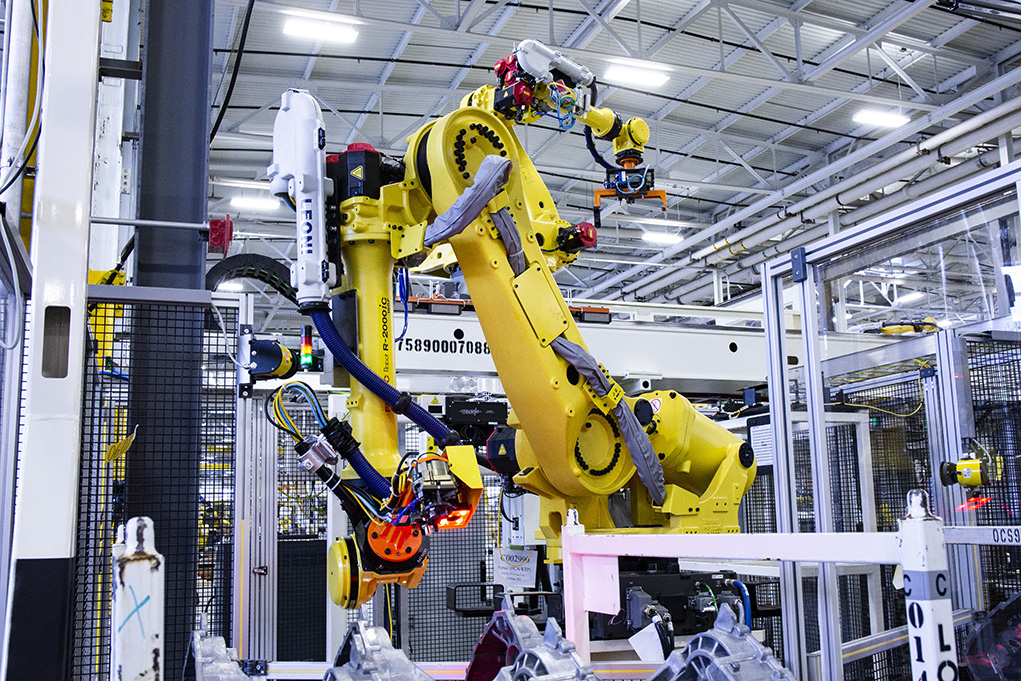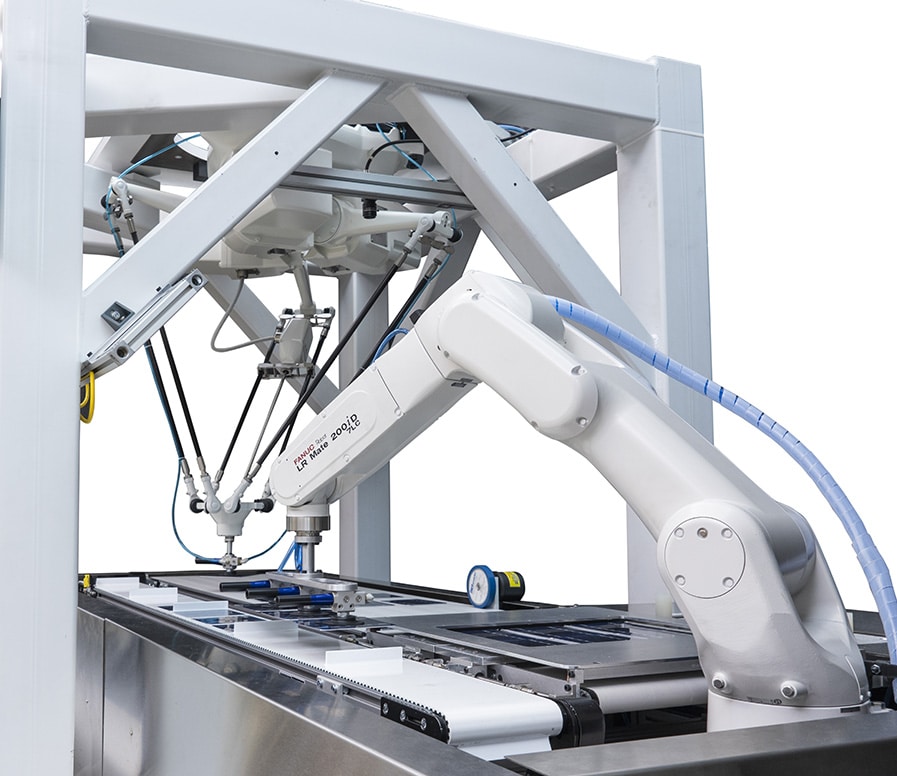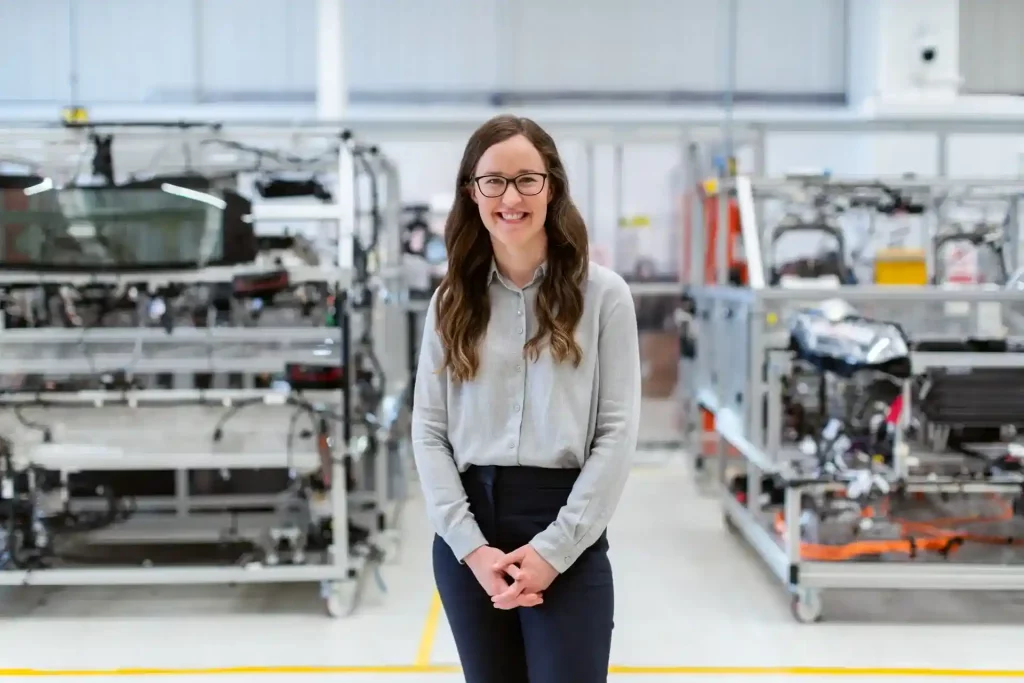As industries continue to grow and evolve, the demand for efficient and effective cleaning methods is at an all-time high. However, with a shortage of skilled labor in manufacturing, companies need help to keep up with the increasing demand. Robotics and automation can solve this problem. By solving the labor shortage and increasing cleaning throughput, these technologies are revolutionizing industrial part cleaning and helping companies meet their production goals without compromising on quality. In this blog post, we will delve deeper into the role of robotics and automation in streamlining parts washing and how they help solve the labor shortage in manufacturing.
The Persistent Challenge of Parts Cleaning in Industrial Manufacturing
Part cleaning in industrial manufacturing has long been seen as a stumbling block. It’s a labor-intensive process that eats into valuable production time and opens up opportunities for errors. The process involves meticulousness, especially when cleaning parts with intricate designs, which prolongs production time and ramps up labor expenses. The situation becomes even more complex with the use of dated cleaning technology. Not only does it cause a dent in productivity, but it also paves the way for extended facility downtime and operational inefficiencies.
The Evolution of Parts Cleaning: Enter Robotics and Automation
As the wheels of technological progress spin ever faster, industrial part cleaning is undergoing a seismic shift. With the exciting arrival of robotics and automation, the once cumbersome, error-prone process of parts washing is being reshaped. This technological coup is setting the stage for a new era in industrial part cleaning that pushes the boundaries of efficiency and precision.
The marriage of robotics and automation with part washing is not merely a tweak; it’s a revolution. It is helping manufacturers bid farewell to outmoded cleaning technology that has long acted as a productivity bottleneck. In its place, robotics, with its relentless precision and efficiency, is taking the reins, driving both profit margins and productivity skywards while minimizing facility downtime.

Including robotics in parts washing is more than an upgrade; it’s a game-changer. Robot-powered part washing can achieve consistency and cleanliness that are nothing short of remarkable. These robotic aids virtually eliminate processing errors, improving part cleanliness that transcends what traditional methods could accomplish.
This evolution solves practical issues within the industry and reshapes our understanding of what’s possible in industrial part cleaning. Introducing robotics and automation into the part-washing process is a shining example of how technology can resolve existing challenges and open doors to new opportunities. This evolution isn’t just transforming how we clean; it’s redefining the very essence of the process.
How Robotic Technology is Transforming Industrial Parts Washing
Imagine a world where part cleaning is no longer a labor-intensive, error-prone process but a smooth, reliable operation. This is the world that robotics is helping to create. Robotic part washing transforms the traditional cleaning process into a sophisticated, efficient system, solving many of the challenges plaguing manufacturers.
The cleaning process no longer needs to be marred by inconsistencies and potential errors. With robotics at the helm, each cleaning operation can be executed with unmatched precision and reliability. These robotic systems can be programmed to handle complex cleaning tasks, bringing a new level of cleanliness to parts that were once challenging to clean.
Better Engineering: Setting the Standard in Robotic Parts Washing
Leading this charge into the future of industrial part cleaning is Better Engineering. BE is setting a new standard in the industry with its cutting-edge automated parts washers, designed with robotics at their core. These systems are not just reliable; they’re consistently so, ensuring that every part washed comes out with the same level of cleanliness.
But the benefits continue beyond consistency and precision. These robotic systems are also incredibly cost-effective. The reduction in labor costs that come with these automated systems makes them a viable solution for manufacturers grappling with labor shortages. These robotic parts washers are more than machines; they solve significant industry challenges like those of the manufacturing labor shortage.
Harnessing the power of robotics in part washing is an exciting stride forward in industrial manufacturing. It marks the beginning of an era where productivity is no longer hampered by outdated technology or labor shortages. Instead, it’s driven by innovation, efficiency, and sustainability, paving the way for a brighter, cleaner future in industrial part cleaning.
Proven Across Industries: Automotive, Aerospace, and More
- Automotive Manufacturing: In the automotive industry, precision is critical. Robotically integrated parts washers are used to clean engine blocks, transmission components, and brake parts before assembly. Automation ensures contaminants are fully removed, reducing the risk of component failure and warranty claims.
- Aerospace & Defense: Aerospace components often involve complex geometries and strict cleanliness standards. Robotically integrated parts washers are used to clean turbine blades, hydraulic systems, and fuel nozzles with unmatched consistency. These systems meet ISO 9001 quality requirements and support mission-critical reliability.
- Heavy Equipment / Industrial Machinery: For manufacturers of construction and agricultural equipment, cleaning large parts like gearboxes, hydraulic cylinders, or engine blocks is labor-intensive. Systems with robotic integration increase throughput by automating this task while reducing workplace hazards.
- Medical Device Manufacturing: In medical device production, sterility and precision are non-negotiable. Robotically integrated part cleaning systems ensure consistent cleaning of surgical instruments, implants, and diagnostic equipment while meeting FDA and GMP standards for cleanliness and traceability.
- Electronics & Semiconductor: Delicate circuit boards and micro-components require meticulous care. Automated parts washers and air washing systems effectively remove flux, oils, and particulates without damaging sensitive materials, ensuring product reliability and performance.
- Food & Beverage Processing Equipment: Sanitation is paramount in this industry. Robotically integrated systems clean stainless steel components, valves, and conveyor parts thoroughly and repeatedly, supporting compliance with food safety standards and reducing contamination risks.
How Automation Reduces Waste in Industrial Parts Cleaning
When we shift our focus toward the environmental implications of industrial part cleaning, we see a stark contrast between traditional methods and automated systems. The latter comes bearing the promise of a greener and cleaner future. With conventional cleaning processes, a substantial amount of waste is inevitable. Excessive use of water, disposal of chemical-laden waste, and non-renewable resource consumption are some of the unavoidable consequences of such outdated methods.
However, the tide is turning with automation on the horizon. It’s not just about efficiency or cost savings anymore; it’s also about stepping up to our environmental responsibilities. With their precise control and optimization, automated cleaning systems promise to reduce waste generation radically. They maximize the utility of every drop of water and every ounce of cleaning solution, ensuring no resources are squandered.
How Automation Improves Safety in Industrial Parts Cleaning

However, the advantages of automation extend beyond resource management. Safety is another area where automation stands tall. The days of workers risking their health by handling toxic cleaning chemicals are gradually relegated to the past. Automation eliminates this risk, securing a safer working environment and further reducing waste in the form of discarded protective gear.
The potential for automation to reduce waste and usher in more sustainable practices in industrial part cleaning cannot be overstated. It’s about embracing the future where profitability aligns with sustainability, a future where the industrial manufacturing landscape isn’t just efficient and profitable and respectful of our planet’s precious resources.
The Future of Industrial Parts Cleaning
The future of industrial parts cleaning is ripe with innovation and opportunity. The accelerated integration of robotics and automation into part washing systems holds immense promise. It’s more than an evolution; it’s a complete overhaul of traditional methods.
The role of robotics in this transformation is pivotal. It presents an effective solution to address the labor shortage in manufacturing. By replacing manual labor with automated processes, these systems cut labor costs and radically increase efficiency and reliability. Intricate parts can be cleaned thoroughly and consistently, minimizing downtime and maximizing productivity.
And let’s remember the promise of automation in reducing waste and enhancing sustainability. It’s time to bid farewell to conventional cleaning methods that have left their mark on our environment. Automation paves the way for a more sustainable future, where every drop of water and every ounce of cleaning solution is maximized. The precise control and optimization that comes with automation, along with the safety benefits, are shaping a future where profitability doesn’t come at the expense of our planet.
Indeed, the upfront costs of embracing this new technology may be substantial. However, the investment is well worth considering the long-term benefits – improved efficiency, reduced labor costs, and the strides toward a more sustainable industry.
Better Engineering has partnered with some of the best robotic companies in America to revolutionize industrial part cleaning using the exciting possibilities of robotics and automation. BE envisions a cleaner, more efficient, and sustainable future while respecting our planet’s precious resources. The future is now, and achieving sparkling clean results has never been easier.


